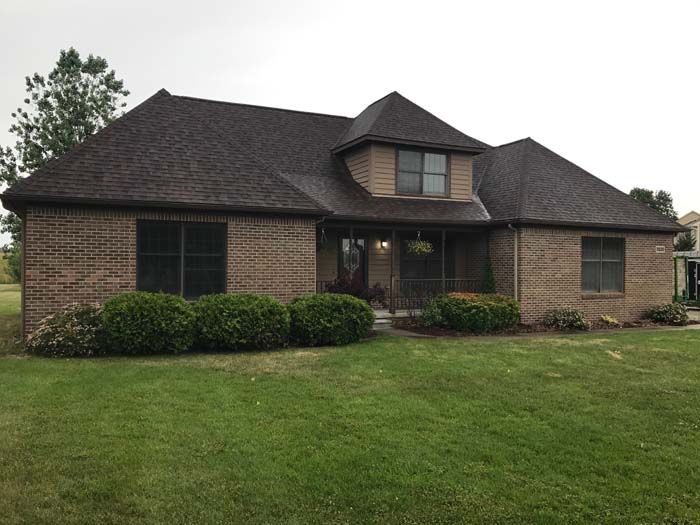Your roof is one of the most critical components of your home, providing protection from the elements and ensuring the structural integrity of your property. However, understanding the complexities of roofing systems can be overwhelming, especially for beginners. In this beginner’s guide to roofing, we’ll break down the basics of roof anatomy, common roofing materials, maintenance tips, and key considerations for homeowners.
- Roof Anatomy:
Understanding the basic components of your roof is essential for identifying potential issues and communicating effectively with roofing professionals. Here are the primary components of a typical roofing system:
- Roof Deck: The roof deck is the structural foundation of your roof, typically made of plywood or oriented strand board (OSB). It provides the base for the roofing materials and supports the weight of the roof.
- Underlayment: The underlayment is a waterproof membrane installed directly onto the roof deck to provide an additional layer of protection against moisture infiltration. It serves as a barrier between the roofing materials and the underlying structure.
- Roofing Materials: The roofing materials, such as shingles, tiles, or metal panels, form the outermost layer of your roof and provide protection from the elements. The type of roofing material used will depend on factors such as climate, budget, and aesthetic preferences.
- Flashing: Flashing is a thin, metal material installed around roof penetrations, such as chimneys, vents, and skylights, to prevent water from seeping into the roof and causing leaks. Properly installed flashing is essential for maintaining a watertight seal and preventing water damage.
- Gutters and Downspouts: Gutters and downspouts are responsible for collecting rainwater from the roof and directing it away from the foundation of the home. Properly functioning gutters and downspouts are essential for preventing water damage to the roof, siding, and foundation.
- Common Roofing Materials:
There are various roofing materials available on the market, each with its own unique characteristics, advantages, and disadvantages. Some of the most common roofing materials include:
- Asphalt Shingles: Asphalt shingles are the most popular roofing material in North America due to their affordability, versatility, and ease of installation. They come in a wide range of colors and styles and offer good durability and weather resistance.
- Metal Roofing: Metal roofing is known for its longevity, durability, and energy efficiency. It is available in a variety of materials, including steel, aluminum, and copper, and can mimic the look of other roofing materials, such as shingles or tiles.
- Wood Shakes or Shingles: Wood shakes or shingles offer a natural and rustic aesthetic that adds warmth and character to a home’s exterior. They are typically made from cedar or redwood and require regular maintenance to prevent rot and decay.
- Clay or Concrete Tiles: Clay or concrete tiles provide a timeless and Mediterranean-inspired look that complements a wide range of architectural styles. They are durable, fire-resistant, and long-lasting but can be heavy and require additional structural support.
- Roof Maintenance:
Regular roof maintenance is essential for prolonging the lifespan of your roof and preventing costly repairs. Here are some basic maintenance tips for homeowners:
- Inspect Your Roof Annually: Schedule a professional roof inspection at least once a year to assess the condition of your roof and identify any potential issues, such as missing shingles, damaged flashing, or signs of water infiltration.
- Clean Gutters and Downspouts: Keep your gutters and downspouts free of debris, such as leaves, twigs, and dirt, to ensure proper drainage and prevent water damage to your roof and home.
- Trim Overhanging Branches: Trim back any overhanging tree limbs that may be touching or rubbing against your roof, as they can cause damage to the roofing materials and provide access for pests.
- Address Leaks Promptly: If you notice signs of a leak, such as water stains on your ceiling or walls, musty odors, or peeling paint, contact a roofing professional immediately to identify and repair the source of the leak before it causes further damage.
- Key Considerations for Homeowners:
When it comes to your roof, there are several key considerations that homeowners should keep in mind:
- Climate: Choose roofing materials that are suited to your local climate, taking into account factors such as temperature extremes, precipitation, and wind exposure.
- Budget: Consider your budget when selecting roofing materials and determining the scope of your roofing project. While some materials may have a higher upfront cost, they may offer better durability and longevity, resulting in long-term savings.
- Aesthetic Preferences: Your roof plays a significant role in the overall appearance of your home, so choose roofing materials that complement your architectural style and personal aesthetic preferences.
- Hiring a Professional: For major roofing projects, such as installation or replacement, it’s essential to hire a qualified roofing professional with the necessary skills, experience, and insurance to ensure the job is done safely and correctly.
In conclusion, understanding the basics of roofing is essential for homeowners to maintain the integrity and longevity of their roofs and protect their investment in their homes. By familiarizing yourself with roof anatomy, common roofing materials, maintenance tips, and key considerations, you can make informed decisions about your roof and ensure that it continues to provide reliable protection for years to come. Whether you’re planning a roofing project or simply want to learn more about caring for your roof, Roofing 101 is your guide to understanding the fundamentals of roofing.


Recent Comments